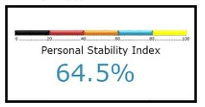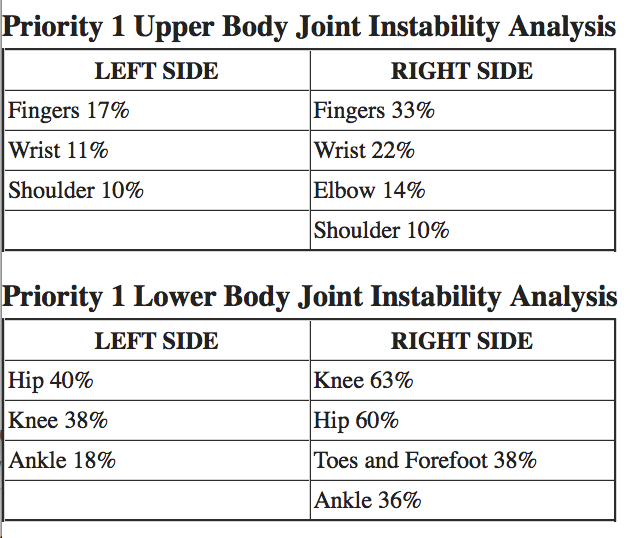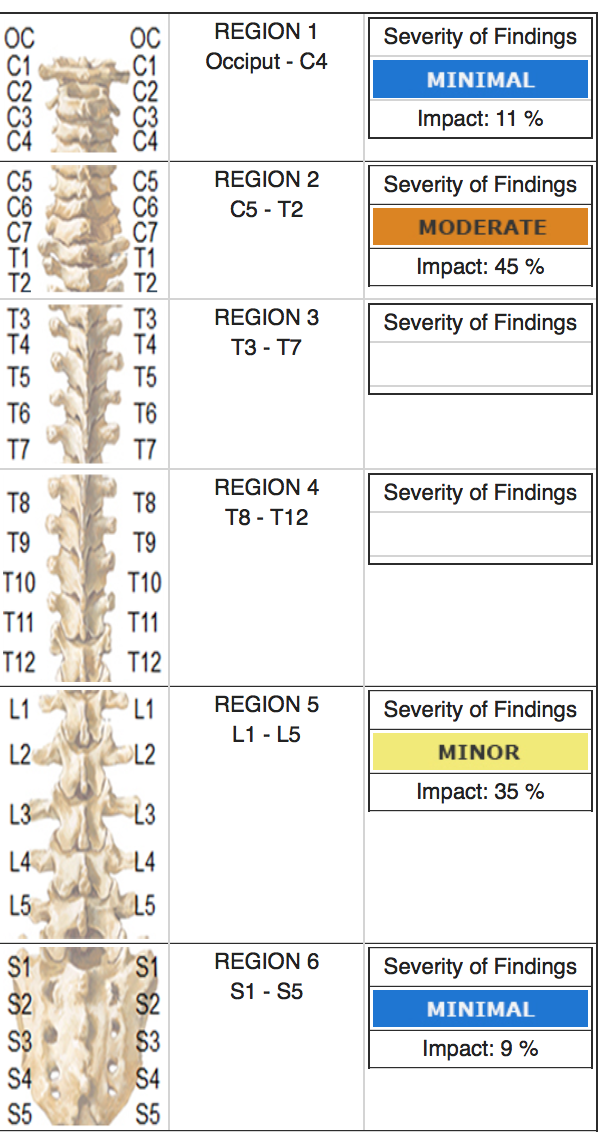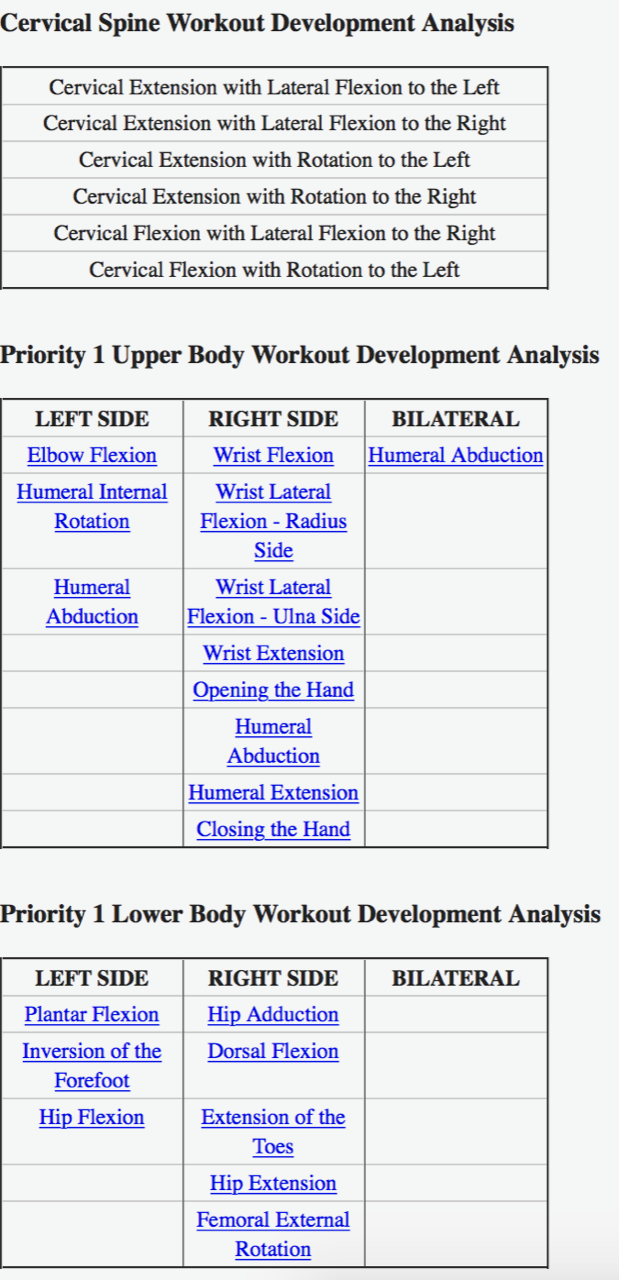The FitAssess Dynamic Movement
Analysis Report
After the completion of the FitAssess Dynamic Movement Assessment, the System competes the real-time calculation of areas of muscular restriction and potential movement constraints. A number of reports are generated to help the practitioner identify restrictions, muscular weaknesses or compensations in the upper and lower body as well the trunk and spine.
The complete report includes a detailed analysis of all the muscles and muscle interactions in the body, a neurological map of spinal regions that have stress levels associate with Restricted Range-of-Motion tests, as well as a detailed listing of each muscle and muscle group that was “Restricted” within a Range-of-Motion test.
The Dynamic Movement and Performance Analysis Index

The Dynamic Movement and Performance Analysis Index is a symmetrical balance score that assesses the body from head to toe based upon all the FitAssess Assessment identified muscular restrictions. The score is utilized to track progress from one evaluation to the next with a simple glance.
The higher the score the less amount of overall muscular restrictions!
The Dynamic Muscular Movement Restriction Analysis
The Dynamic Movement and Performance Analysis Report is a blueprint to bodily compensations and muscular restrictions that hamper fluid bodily movement and performance. When restrictions or constraints are found, it highlights muscles and muscle groups that are not performing correctly and may be stressed – pointing to areas that need strengthening and movement flexibility.
In this example, the right side, lower body has the greatest restriction. The Lower-body, Right-Side Hip is 60% restricted an the Knee is 63% constrained.
There are also restrictions or constraints on the Lower-body, Left Side with the Hip at 40% constrained and the Knee at 38%\

The Neuro-Mapping Report

The FitAssess Neuro Mapping Report is an innovative technology that allows a greater insight into the stress loads that are placed along the spine by muscular restrictions and movement constraints.
The Report enables the identification of specific areas of possible abnormalities such as bulges, herniations and the like. Spinal abnormalities can place pressure on nerve roots causing disrupted neurological signals from muscles and muscle groups. The spine graph also acts as a warning system to movement restrictions.
For example, being able to identify a major or severe stress in the cervical spine could immediately lead to avoidance of daily activities that increase compression forces along the spine.
In this case Region 2 (C5-T2 of the Spine) is Moderately Severe while Region 5 exhibits Minor Severity and has the possibilities of a more severe action, if not corrected soon.
FitAssess Dynamic Movement Restriction Analysis
The FitAssess Muscular Movement Restriction Analysis provides detailed analysis of the Range-of-Motion tests that elicited “Restricted” muscular motion during the assessment. The analysis also provides a list of each muscle associated with each Constrained Range of Motion.
The analysis is designed to provide in-depth insight into the actions of bodily muscles and their relationships to movements, potential restrictions, as well as possible possible severe pain or injury.
The Cervial Spine Assessment Analysis lists each Cervical Range-of-Motion test associated with a “Restricted” cervical muscle.
The cervical spine is the uppermost part of the vertebral column. It plays a crucial role in supporting the head and facilitating movement of the neck – allowing rotation, bending and tilting.
The Upper Body and Lower Body Assessment Analysis reports detail each ROM that featured a muscle or muscle group that were designated as “Restricted”. The list itemizes those Restricted ROM tests on the Left Side, Right Side, or both sides (Bilateral).
For example, the Humeral Abduction ROM test on both the Left Side and the Right Side showed muscular constraints, therefore it was also listed as Bilateral.
